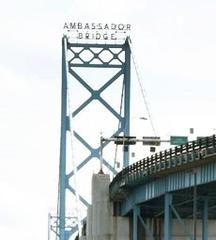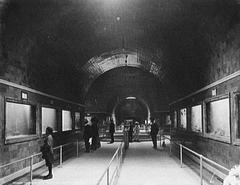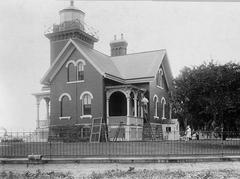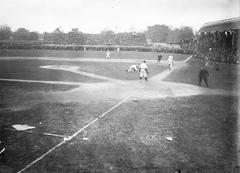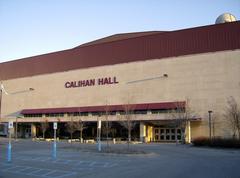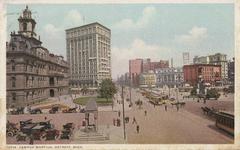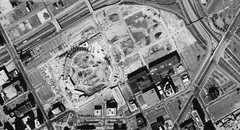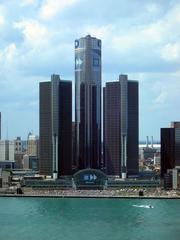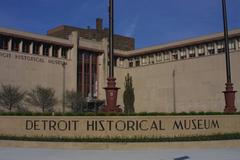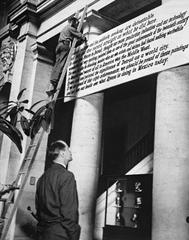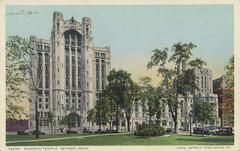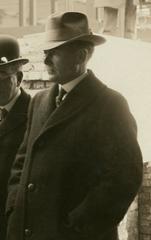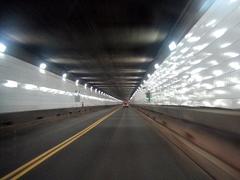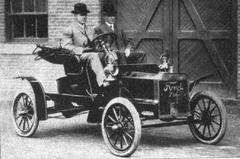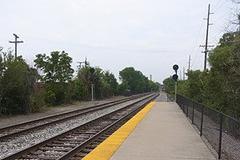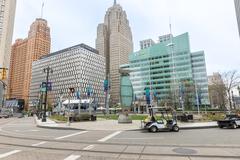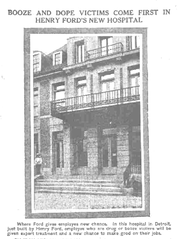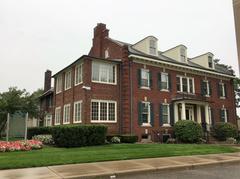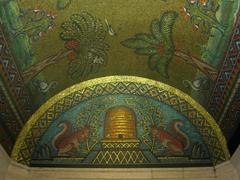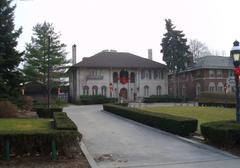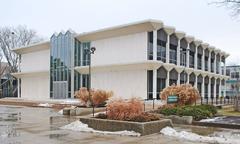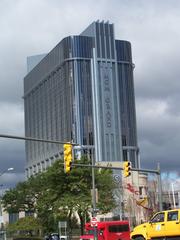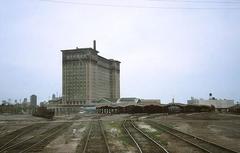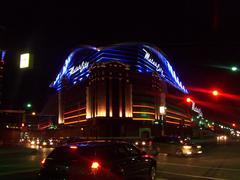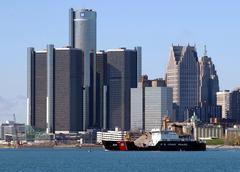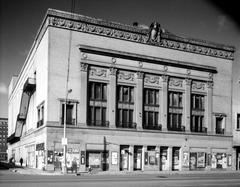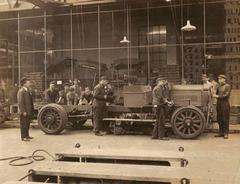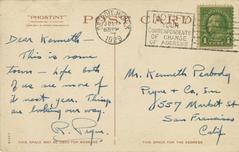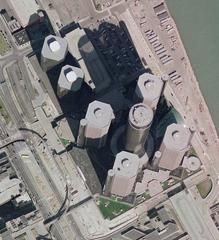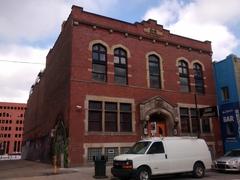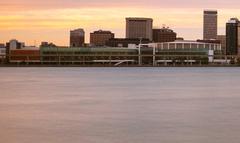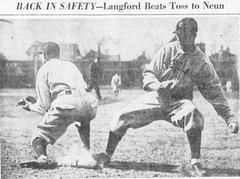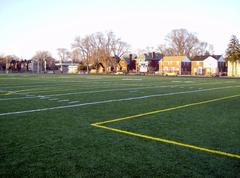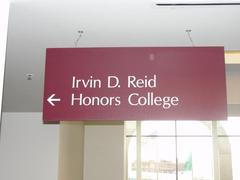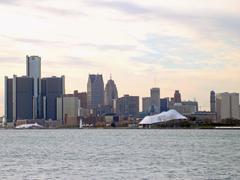
Edmund Atkinson School: Visiting Hours, Tickets, and Historical Significance in Detroit
Date: 04/07/2025
Introduction
Edmund Atkinson School, a landmark in Detroit’s historic Krainz Woods neighborhood, stands as a symbol of the city’s educational advancement and architectural distinction. This comprehensive guide delves into the school’s rich history, tracing Detroit’s evolution from early 19th-century private and subscription schools to the establishment of accessible public education. The school’s Collegiate Gothic architecture, designed by McGrath, Dohmen, & Page in the late 1920s, reflects both artistic excellence and a commitment to inclusive learning. Visitors will find essential information on planning a visit, including hours, tours, accessibility, and nearby attractions, as well as an exploration of the school’s enduring role within Detroit’s African American and immigrant communities. (Detroit Historical Society; Historic Structures; Detroit MI Government PDF)
Table of Contents
- Early Educational Landscape in Detroit
- The Push for Public Education
- The Emergence of Free Schools
- Educational Reform and Expansion
- Detroit’s Educational Growth and Diversity
- The Legacy of 19th-Century Detroit Schools
- Architectural Design and Features
- Cultural and Community Significance
- Visiting Edmund Atkinson School: Practical Information
- Nearby Attractions
- Frequently Asked Questions
- Conclusion
- References
Early Educational Landscape in Detroit
In the early 1800s, Detroit’s educational system was decentralized, consisting mostly of private and subscription schools funded by groups of parents. Classes often took place in homes or rented rooms, with families sharing costs for tuition and supplies. Access to education was limited, especially for low-income families, and societies such as the Mechanics’ Society and the Woman’s Literary Society sought to fill gaps by organizing classes and incentives for children (Detroit Historical Society).
The Push for Public Education
The first legislative efforts for public education began in 1827, mandating schools for townships with 50+ residents, but early attempts struggled. The city’s first teacher died shortly after being hired, and public schools continued to require tuition from those who could afford it. In 1816, Reverend John Monteith’s classical school evolved into the “Catholepistemiad,” the precursor to the University of Michigan (Detroit Historical Society).
The Emergence of Free Schools
By 1832, community-driven efforts such as the Free School Society raised funds to establish schools offering free books and tuition, primarily to children aged four to ten. By 1837, the society supported three schools with 200 students. The city formalized oversight in 1842 by creating its first Board of Education, but disparities persisted, such as gender-based pay gaps among teachers (Detroit Historical Society).
Educational Reform and Expansion
The mid-19th century brought reforms aimed at improving quality and accessibility. John F. Nichols’ 1856 survey highlighted deficiencies, leading to standardized curricula and grading. The General Schools Law of 1867 ended legal segregation, though enforcement was fought in courts until 1869. Facilities improved with better lighting, ventilation, and gym classes (Detroit Historical Society).
Detroit’s Educational Growth and Diversity
By 1900, Detroit’s population soared, making it one of the most diverse cities in the U.S. The public school system adapted to serve a multicultural student body, laying the foundation for institutions like Edmund Atkinson School. The city’s commitment to free, inclusive education became a hallmark of its educational philosophy (Detroit Historical Society).
The Legacy of 19th-Century Detroit Schools
Detroit’s journey from fragmented private schooling to a robust public education system set precedents for nationwide reform. Edmund Atkinson School, established during this era of transformation, continues to embody accessibility, diversity, and community engagement, serving as a living testament to Detroit’s resilience and educational progress (Detroit Historical Society).
Architectural Design and Features
Collegiate Gothic Style
Edmund Atkinson School is a prime example of the Collegiate Gothic style, popular in early 20th-century educational architecture. Designed by McGrath, Dohmen, & Page, the original unit was completed in 1927, with a significant addition in 1931 (Historic Structures; Detroit MI Government PDF). Notable features include:
- Symmetrical Facade: Five bays wide, built from orange brick and ashlar stonework.
- Signature Gothic Elements: Central entrance with a compound Gothic arch, limestone trim, and an engraved plaque.
- Expansive Windows: Groupings maximize natural classroom light.
- 1931 Addition: Includes a tower-like bay with decorative limestone, linking old and new sections (Wikipedia; Wikiwand).
Site Layout and Materials
Spanning two blocks, the school faces Hildale, Fenelon, Stockton, and Healy Avenues, with entrances designed to welcome the community. Materials such as orange face brick, ashlar stone, and limestone detailing contribute to its distinctive appearance (Historic Structures; Detroit MI Government PDF).
Interior and Functional Design
The school was built under Detroit Public Schools’ “unit plan,” enabling phased expansion and following the “platoon school” model—students rotated between academic, vocational, and recreational spaces. Key interior features include:
- Auditorium and Gymnasium: Added in 1931 for educational and community use.
- Practical Arts and Multipurpose Rooms: Supporting progressive educational methods.
- Restored Terrazzo Flooring: Preserved during the 2010 renovation.
Cultural and Community Significance
Anchor for Krainz Woods and Conant Gardens
From 1928, the school served the predominantly African American Conant Gardens and neighboring immigrant communities, providing crucial educational access during segregation (Historic Structures; Wikiwand).
Innovation and Social Impact
The platoon model promoted holistic development, and the school regularly hosted field days, concerts, and performances, reinforcing its status as a community hub (Detroit MI Government PDF).
Preservation and Adaptive Reuse
After closing in 2007, the building was purchased and renovated by National Heritage Academy, reopening in 2010 as Legacy Charter Academy. The $6 million restoration preserved historic character, added modern facilities, and improved accessibility. The school was added to the National Register of Historic Places in 2011 (Wikipedia).
Visiting Edmund Atkinson School: Practical Information
Location
- Address: 4900 E. Hildale Street, Detroit, MI 48234
Visiting Hours and Access
- Public tours are available by appointment only.
- Contact Legacy Charter Academy or Detroit heritage organizations to arrange visits.
- Free parking is available on site.
Ticket Information
- No general admission fee; some guided tours may request donations for preservation.
Accessibility
- The building is updated with accessible entrances and facilities for those with disabilities.
Nearby Attractions
- John Krainz Jr. Memorial Park: Adjacent green space for recreation.
- Sojourner Truth Homes: Historic housing project with deep neighborhood ties.
- Detroit Institute of Arts: World-renowned art collection (Nomadic Matt).
- Detroit Historical Museum: Exhibits on the city’s rich history (Visit Detroit).
- Belle Isle Park: Expansive island park with gardens and views (Nomadic Matt).
- Eastern Market: Detroit’s bustling food and culture hub (Nomadic Matt).
Frequently Asked Questions
Q: What are the visiting hours?
A: Tours are by appointment during school hours. Contact Legacy Charter Academy to schedule.
Q: Is there an admission fee?
A: No, but donations may be suggested for guided tours.
Q: Is the building accessible to people with disabilities?
A: Yes, modern renovations have ensured accessibility.
Q: Can I take photographs?
A: Exterior photos are welcome; interior photography requires advance approval.
Q: How do I learn about special events or tours?
A: Visit the Detroit Public Schools Community District website or contact the school for updates.
Conclusion
Edmund Atkinson School stands as a living testament to Detroit’s educational reforms, architectural heritage, and community spirit. From its origins in a rapidly diversifying city to its role as a beacon for African American and immigrant families, the school exemplifies resilience and adaptability. Its preservation and current function as Legacy Charter Academy ensure that this landmark continues to inspire and educate. Visitors can engage with Detroit’s rich history and culture through guided tours, community events, and exploration of nearby attractions. For deeper engagement, use resources like the Audiala app and connect with local heritage organizations.
References
- Detroit Historical Society: Detroit Schools in the 19th Century
- Historic Structures: Edmund Atkinson School
- Detroit MI Government: Draft Final Report - Krainz Woods - Sojourner Truth Homes
- Wikipedia: Edmund Atkinson School
- Wikiwand: Edmund Atkinson School
- Visit Detroit: Detroit Popular Attractions
- Nomadic Matt: Things to See and Do in Detroit
- Detroit Public Schools Community District: Official Site

